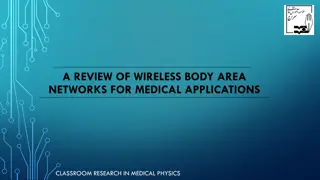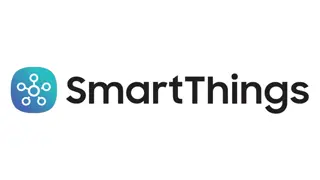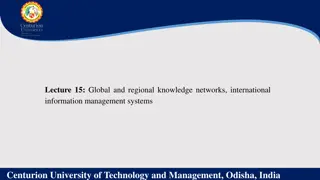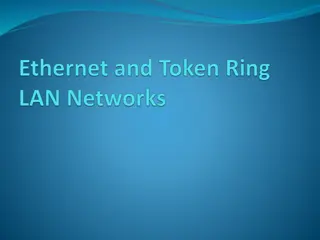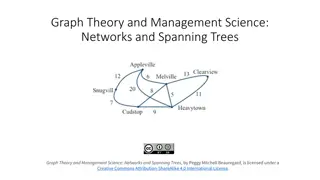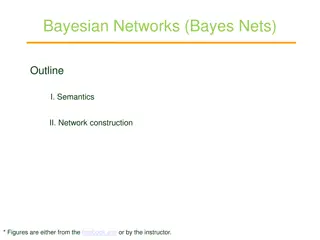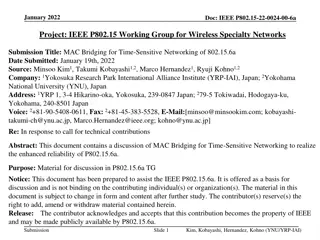Computational Physics (Lecture 18)
Neural networks explained with the example of feedforward vs. recurrent networks. Feedforward networks propagate data, while recurrent models allow loops for cascade effects. Recurrent networks are less influential but closer to the brain's function. Introduction to handwritten digit classification
0 views • 55 slides
Evolution and Potential of 5G Technology
Explore the evolving landscape of 5G technology, from enhanced mobile broadband to groundbreaking use cases and standalone networks. Learn how supportive regulations and spectrum allocation are vital for unlocking 5G's full potential. Discover the transformative impact of Standalone 5G networks on i
8 views • 10 slides
It’s Relaxing Time! Find Premium Body Spa Centres in Jamshedpur
Body spa relaxes not only the body, it refreshes and rejuvenates the soul from within. With time, the concept of beauty and care has turned its way to a broader spectrum. Women started the journey. In today\u2019s era of equality, men are on the same path toward the breakthrough journey, with a focu
2 views • 8 slides
Understanding Computer Networks: Types and Characteristics
In the realm of computer networks, nodes share resources through digital telecommunications networks. These networks enable lightning-fast data exchange and boast attributes like speed, accuracy, diligence, versatility, and vast storage capabilities. Additionally, various types of networks exist tod
9 views • 12 slides
Graph Neural Networks
Graph Neural Networks (GNNs) are a versatile form of neural networks that encompass various network architectures like NNs, CNNs, and RNNs, as well as unsupervised learning models such as RBM and DBNs. They find applications in diverse fields such as object detection, machine translation, and drug d
2 views • 48 slides
A Review of Wireless Body Area Networks for Medical Applications
Recent advancements in MEMS technology, integrated circuits, and wireless communication have enabled the development of Wireless Body Area Networks (WBANs) for ambulatory health monitoring. This paper discusses the infrastructure, in-body antenna design, low-power MAC protocol, and various applicati
1 views • 23 slides
Understanding Artificial Neural Networks From Scratch
Learn how to build artificial neural networks from scratch, focusing on multi-level feedforward networks like multi-level perceptrons. Discover how neural networks function, including training large networks in parallel and distributed systems, and grasp concepts such as learning non-linear function
1 views • 33 slides
Understanding Back-Propagation Algorithm in Neural Networks
Artificial Neural Networks aim to mimic brain processing. Back-propagation is a key method to train these networks, optimizing weights to minimize loss. Multi-layer networks enable learning complex patterns by creating internal representations. Historical background traces the development from early
1 views • 24 slides
Impact of Culture on Body Image Dissatisfaction
Body image dissatisfaction pertains to how individuals view themselves, influenced by societal norms and media representations. It affects both biological males and females, with culture shaping our perception of the ideal body image. Social media, fashion, entertainment, and advertising play signif
3 views • 13 slides
Exploring Samsung SmartThings Hub and Zigbee/Zwave Networks
The Samsung SmartThings hub is a versatile device connecting Zigbee and Zwave networks, offering secure access to SkySpark via HTTPS. Zigbee and Zwave networks operate on distinct frequencies, enabling efficient communication without interference with WiFi. These networks support various devices for
0 views • 19 slides
Exploring Length and Area Concepts in Year 7 Maths
Delve into the world of measurements, accuracy limits, and area calculations in Year 7 Math. Learn about the accuracy of measurements, limits of accuracy, calculating the area of shapes, converting units of area, and investigating the area of triangles. Explore practical examples and understand the
0 views • 20 slides
Understanding Wireless Wide Area Networks (WWAN) and Cellular Network Principles
Wireless Wide Area Networks (WWAN) utilize cellular network technology like GSM to facilitate seamless communication for mobile users by creating cells in a geographic service area. Cellular networks are structured with backbone networks, base stations, and mobile stations, allowing for growth and c
2 views • 17 slides
Understanding the Influence of Media on Body Image Perception
The media plays a significant role in shaping perceptions of body image, influencing how individuals view themselves and others. This article explores the impact of media portrayal on body image perceptions in both men and women, discussing the positive and negative influences of media representatio
3 views • 9 slides
Understanding Interconnection Networks in Multiprocessor Systems
Interconnection networks are essential in multiprocessor systems, linking processing elements, memory modules, and I/O units. They enable data exchange between processors and memory units, determining system performance. Fully connected interconnection networks offer high reliability but require ext
1 views • 19 slides
Understanding Computer Networks in BCA VI Semester
Computer networks are vital for sharing resources, exchanging files, and enabling electronic communications. This content explores the basics of computer networks, the components involved, advantages like file sharing and resource sharing, and different network computing models such as centralized a
1 views • 96 slides
Understanding Computer Communication Networks at Anjuman College
This course focuses on computer communication networks at Anjuman College of Engineering and Technology in Tirupati, covering topics such as basic concepts, network layers, IP addressing, hardware aspects, LAN standards, security, and administration. Students will learn about theoretical and practic
0 views • 72 slides
Introduction to Neural Networks in IBM SPSS Modeler 14.2
This presentation provides an introduction to neural networks in IBM SPSS Modeler 14.2. It covers the concepts of directed data mining using neural networks, the structure of neural networks, terms associated with neural networks, and the process of inputs and outputs in neural network models. The d
0 views • 18 slides
Enhancing Agriculture Through Global Knowledge Networks and Information Management Systems
Global and regional knowledge networks play a vital role in agriculture by facilitating information sharing, collaboration, capacity building, and coordination among stakeholders. These networks improve access to information, foster collaboration, enhance capacity building, and strengthen coordinati
0 views • 5 slides
Unlocking the Potential of Local Area Data Networks (LADN) in 5G Networks
Explore how Local Area Data Networks (LADN) in 5G enable ultra-low latency, high-speed connectivity for specific service areas. Learn how LADN allows for tailored services in different scenarios like stadiums and enterprise campuses, optimizing user experiences and network efficiency.
0 views • 40 slides
Understanding Router Routing Tables in Computer Networks
Router routing tables are crucial for directing packets to their destination networks. These tables contain information on directly connected and remote networks, as well as default routes. Routers use this information to determine the best path for packet forwarding based on network/next hop associ
0 views • 48 slides
P-Rank: A Comprehensive Structural Similarity Measure over Information Networks
Analyzing the concept of structural similarity within Information Networks (INs), the study introduces P-Rank as a more advanced alternative to SimRank. By addressing the limitations of SimRank and offering a more efficient computational approach, P-Rank aims to provide a comprehensive measure of si
0 views • 17 slides
Understanding Local Area Networks (LAN) and IEEE Project 802
A Local Area Network (LAN) is a computer network designed for limited geographic areas, often interconnected with wide area networks (WANs) or the Internet. IEEE Project 802 established standards for LAN protocols, focusing on the physical and data link layers. Ethernet emerged as the dominant LAN t
0 views • 27 slides
Understanding Advanced Classifiers and Neural Networks
This content explores the concept of advanced classifiers like Neural Networks which compose complex relationships through combining perceptrons. It delves into the workings of the classic perceptron and how modern neural networks use more complex decision functions. The visuals provided offer a cle
0 views • 26 slides
Understanding Area and Surface Area in Mathematics
This informative content explains the concepts of area and surface area in mathematics. It emphasizes the distinction between rectangles, rectangular areas, cuboids, and rhombuses to promote accurate calculations. The importance of scale shifts, estimating irregular shapes, and calculating perimeter
0 views • 6 slides
Understanding Relational Bayesian Networks in Statistical Inference
Relational Bayesian networks play a crucial role in predicting ground facts and frequencies in complex relational data. Through first-order and ground probabilities, these networks provide insights into individual cases and categories. Learning Bayesian networks for such data involves exploring diff
0 views • 46 slides
Understanding Overlay Networks and Distributed Hash Tables
Overlay networks are logical networks built on top of lower-layer networks, allowing for efficient data lookup and reliable communication. They come in unstructured and structured forms, with examples like Gnutella and BitTorrent. Distributed Hash Tables (DHTs) are used in real-world applications li
0 views • 45 slides
Understanding Networks: An Introduction to the World of Connections
Networks define the structure of interactions between agents, portraying relationships as ties or links. Various examples such as the 9/11 terrorists network, international trade network, biological networks, and historical marriage alliances in Florence illustrate the power dynamics within differen
0 views • 46 slides
Understanding Graph Theory and Networks: Concepts and Applications
Explore the concepts of graph theory and management science, focusing on networks, spanning trees, and their practical applications. Learn about the difference between a snowplow tracing streets, a traveler visiting cities, and connecting towns with cables. Discover how networks like Facebook evolve
0 views • 15 slides
Parallel Prefix Networks in Divide-and-Conquer Algorithms
Explore the construction and comparisons of various parallel prefix networks in divide-and-conquer algorithms, such as Ladner-Fischer, Brent-Kung, and Kogge-Stone. These networks optimize computation efficiency through parallel processing, showcasing different levels of latency, cell complexity, and
1 views • 21 slides
Understanding Body Composition: Types, Measurement Methods, and Impacts on Health
Body composition is a key aspect of overall health and fitness. It involves understanding different somatotypes - ectomorph, endomorph, and mesomorph, as well as distinguishing between lean body mass and body fat. Various methods such as underwater weighing, electrical impedance, skinfold measuremen
0 views • 26 slides
Diverse Social Entities Mining from Linked Data in Social Networks
This research focuses on mining diverse social entities from linked data in social networks using a DF-tree structure and DF-growth mining algorithm. The study explores the extraction of important linked data in social networks and the mining of various social entities such as friends. Prominence va
0 views • 13 slides
Understanding Bayesian Networks: A Comprehensive Overview
Bayesian networks, also known as Bayes nets, provide a powerful tool for modeling uncertainty in complex domains by representing conditional independence relationships among variables. This outline covers the semantics, construction, and application of Bayesian networks, illustrating how they offer
0 views • 17 slides
MAC Bridging for Time-Sensitive Networking in 802.15.6a
Discussion on implementing MAC bridging for enhanced reliability in IEEE P802.15.6a networks, focusing on Time-Sensitive Networking (TSN) concepts for low latency and reliability in Body Area Networks (BAN). The document addresses the significance of TSN goals for BAN applications like vital signs m
0 views • 11 slides
Machine Learning and Artificial Neural Networks for Face Verification: Overview and Applications
In the realm of computer vision, the integration of machine learning and artificial neural networks has enabled significant advancements in face verification tasks. Leveraging the brain's inherent pattern recognition capabilities, AI systems can analyze vast amounts of data to enhance face detection
0 views • 13 slides
Understanding Network Analysis: Whole Networks vs. Ego Networks
Explore the differences between Whole Networks and Ego Networks in social network analysis. Whole Networks provide comprehensive information about all nodes and links, enabling the computation of network-level statistics. On the other hand, Ego Networks focus on a sample of nodes, limiting the abili
0 views • 31 slides
Evolution of Networking: Embracing Software-Defined Networks
Embrace the future of networking by transitioning to Software-Defined Networks (SDN), overcoming drawbacks of current paradigms. Explore SDN's motivation, OpenFlow API, challenges, and use-cases. Compare the complexities of today's distributed, error-prone networks with the simplicity and efficiency
0 views • 36 slides
Understanding Interconnection Networks in Embedded Computer Architecture
Explore the intricacies of interconnection networks in embedded computer architecture, covering topics such as connecting multiple processors, topologies, routing, deadlock, switching, and performance considerations. Learn about parallel computer systems, cache interconnections, network-on-chip, sha
0 views • 43 slides
Calculating Polygon Area and Trapezium Area with Known Coordinates
The content above guides you on finding the exact area of a polygon by calculating the areas of individual triangles within it. It also demonstrates how to list coordinates in a spreadsheet, calculate the area of trapeziums formed by pairs of coordinates, and sum their areas to determine the total a
0 views • 28 slides
Understanding Deep Generative Bayesian Networks in Machine Learning
Exploring the differences between Neural Networks and Bayesian Neural Networks, the advantages of the latter including robustness and adaptation capabilities, the Bayesian theory behind these networks, and insights into the comparison with regular neural network theory. Dive into the complexities, u
0 views • 22 slides
Exploring Networks in Rutland's Community Health Network Study
This study focuses on describing the networks of organizations that have emerged in each Blueprint Health Service Area (HSA) to support population and individual health. It examines the role of Community Health Teams, the connections between participating organizations, characteristics of successful
0 views • 17 slides





